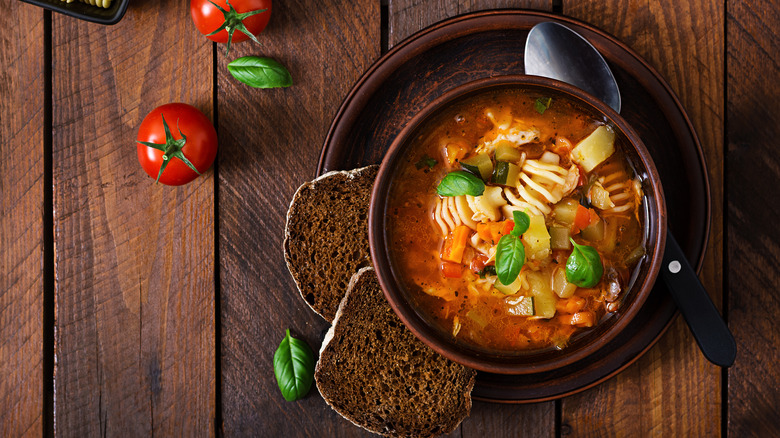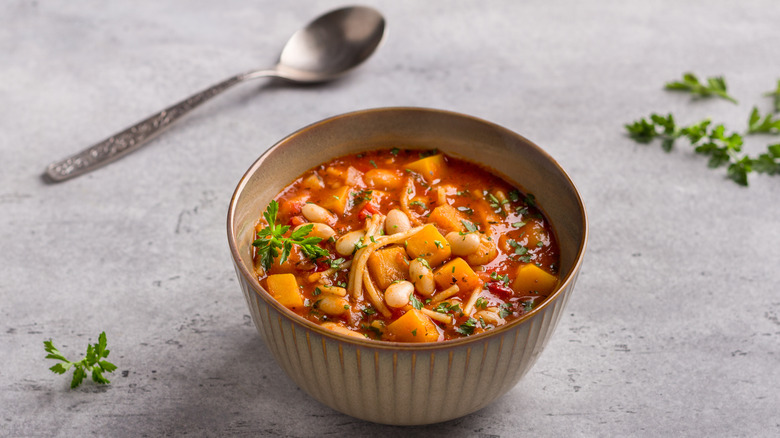Add Pasta To Minestrone Right Before Serving It For A Notable Textural Difference
Traditionally made with leftover vegetables and pasta, minestrone is a deliciously thick Italian soup that's the very definition of hearty and comforting. Toss in some beans and a slice of buttered bread and you have a filling meal-in-a-bowl that's rich in protein, packed with flavor, and super-satisfying. An easy way to elevate this so-called "poor man's soup" even further is to add the pasta to the broth just before serving for a notable texture difference that complements the chunkiness of the beans and the thickly-diced root veggies, like carrots, potatoes, and onions.
Small varieties of pasta, such as ditalini, macaroni, or orzo, work best in minestrone because they're dainty enough to fit on a soup spoon or sip directly from a mug. Their miniature size also means they don't soak up an abundance of broth, like bigger shapes that can overly swell when submerged in liquid. However, even smaller types will continue to absorb some of the minestrone broth as they sit in the soup because of the porous nature of pasta. This can cause the pasta to bloat, turning its perfectly al dente texture into a gummy, slimy consistency. For this reason, it's best to serve minestrone as soon as it's ready to prevent the pasta from swelling in the broth. However, this isn't always possible, especially if you're cooking well in advance of dinner or want to save a batch in the fridge to enjoy later in the week. This is where preparing the pasta separately comes in.
How to add pasta separately to minestrone soup
In many minestrone recipes, the uncooked pasta is added directly to the broth and left to simmer until just cooked. However, to keep the texture of your short noodles at their best, you can boil them separately in salted water, as per the packet instructions, until barely tender, and set them aside until it's time to eat your soup. This way, you can heat the brothy beans and veggie element of your minestrone first before stirring through spoonfuls of cooked pasta moments before serving – your dilatini or ringlet pasta will remain perfectly cooked and distinct alongside the soft vegetable and creamy beans. Furthermore, because the pasta shapes are so tiny, your piping-hot soup will warm the noodles well, so you won't need to heat them up beforehand.
Another benefit of waiting to add pasta to minestrone just before plating (or serving it on the side along with freshly shaved parmesan, herbs, and buttered bread) is that your diners can choose how much they want to add to their bowl, creating a customized soup featuring their favorite toppings. Finally, if you have any soup left over, you can simply store it in the fridge alongside your separate container of cooked pasta and combine them when you're ready to eat the next day.

